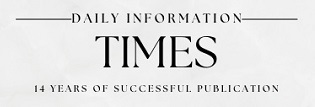KARACHI:
The government will collect an additional tax in the range of 10% to 16% from banks in case their lending to the private sector falls below 50% of total deposits, aimed at encouraging them to provide more financing to ramp up business activities ahead of a potential drop in borrowing cost.
The record high policy rate of the State Bank of Pakistan (SBP) at 22% resulted in default by many businesses and households on bank loan repayments in 2023. This led to a spike in bad loans of banks to a 14-year high at Rs62 billion. Topline Research reported that banks having advance-to-deposit ratio (ADR) below 40% would pay a 16% tax on the income generated from investment in government debt securities like treasury bills (T-bills) and Pakistan Investment Bonds (PIBs).
Financial institutions will pay a 10% tax in case their ADR stands above 40% but remains below 50%. There will be no such tax on banks keeping the ADR above 50%. In 2023, the ADR of almost all the banks listed on the Pakistan Stock Exchange (PSX) stood below 50%, except for three banks namely Samba Bank, Faysal Bank and The Bank of Punjab, the research house said.
Arif Habib Limited economist Sana Tawfik elaborated that banks in their annual and quarterly analyst briefings revealed they had been subject to the tax in case of a low ADR in 2022. They, however, got exemption in calendar year 2023. “Technically, as per law and in principle, the tax has been reinstated in 2024 considering the exemption was only for one year,” she said. Some banks, however, are waiting for the upcoming budget to have clarity whether the tax has become applicable again in 2024.
The re-imposition of the tax may encourage banks to revert to the old practice where they stopped accepting higher deposits from clients to show compliance with the ADR requirement. Low deposits in the last month of 2023, ie, December automatically took advances to the private sector on the upside, showing the banks met the ADR requirement and were not liable to pay the tax for 2022, she said.
Tawfik was of the view that the government should establish a new mechanism to check ADR compliance, like asking banks to maintain the ratio on a weekly, monthly or quarterly basis instead of once in a year in December. This condition will encourage them to step up lending to the private sector in its true sense. Though some banks are eager to provide more credit to private businesses, some others do not want to take extra risk in a high interest rate scenario, where chances are high for an increase in non-performing loans (NPLs).
In a report titled “Banks: all-time high interest rates take NPL accretion at 14-year high”, JS Global Head of Research Amreen Soorani said “analysis of the NPL stock in calendar year 2023 shows an absolute increase of Rs62 billion – the highest since 2010, taking credit cost to Rs52 billion. The infection ratio deteriorated 41 basis points year-on-year to 6.2% in calendar year 2023.”
The monetary tightening cycle generally sparks concerns about the asset quality of banks and potentially large provisioning expenses. This cycle, which has seen a 15-percentage-point expansion in policy rate to 22% in the past three years, is no different when it comes to similar concerns, she said. Moreover, in the midst of such concerns, the sector faced regulations discouraging a lower ADR by penalising the same via higher taxes, which were later exempted for calendar year 2023, but remain in place for CY24 and beyond.
“This exemption for CY23 led banks to move away from loan disbursements this year, reducing the ADR from 53% to 44%, as lending demand also reduced amid higher borrowing costs, coupled with the banking sector cherry-picking blue-chip borrowers to shield its asset quality.”
Soorani analysed segment-wise loan portfolio and growth of various banks where the most common growth segments were textiles, individual consumers, agriculture and energy. These sectors cumulatively account for almost 45% of the lending book of most of the banks listed at the PSX. Other than the agriculture sector, the remaining top segments have registered no growth this year.
Textiles are amongst the large contributing segments in the banking sector’s lending portfolio for sample banks (having 85% of the sector’s market capitalisation at the PSX), maintaining a 17% loan portfolio. “The contribution to NPL accretion has been a mixed bag with varied segments for some banks while concentrated for others, however, textiles were again the segment highlighted more than others,” she said.




No comment